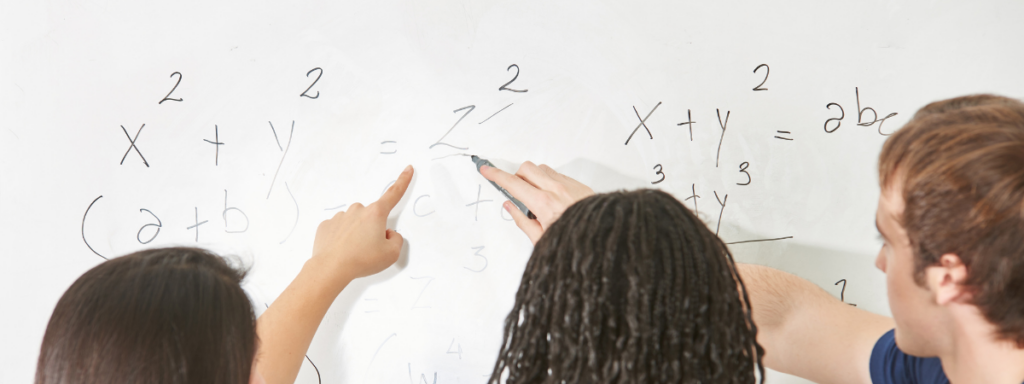High School Math Roadmap (Grades 9–11)
目录
What to do in High School
In today’s competitive academic landscape, high school students who love math need more than strong grades to stand out. Elite universities seek students with a coherent academic growth path—one that starts with challenging coursework and extends into math competitions, AP courses, academic research, and leadership roles. From 9th to 11th grade, each step should build on the last, showcasing depth, progression, and impact. This guide offers a detailed, year-by-year high school math roadmap to help students transform their passion into academic distinction.
9th Grade: Laying the Foundation
This is the year to build the groundwork for future growth. Students should focus on mastering essential math subjects while gradually exploring extracurriculars and independent projects.
1. Strengthen Core Math Skills
Recommended courses: Geometry, Algebra II, and if possible, move into Pre-Calculus by year-end.
Why it matters: These subjects are prerequisites for AP Calculus AB/BC and higher-level courses like Multivariable Calculus. A strong grasp here prevents later struggles and sets the tone for advanced math learning.
2. Participate in Entry-Level Competitions (AMC 10/12)
The AMC (American Mathematics Competitions) is a nationally recognized challenge that tests logical reasoning, problem-solving, and creativity.
Even a modest score early on helps students gain exposure, while higher scores can eventually lead to AIME qualification.
Start prep in September; contests are usually held in November.
3. Join a Science Fair with a Math-Based Project
Suggested project types: basic mathematical modeling, data analysis, or statistical experiments.
Why it helps: This builds research confidence and mimics the format of future research papers. It’s an ideal “first step” into academic inquiry.
4. Get Involved in Math Communities
Join your school’s Math Club or Mu Alpha Theta, the national math honor society.
Participate in math-focused scholarship programs or extracurricular competitions.
These activities develop collaboration, leadership, and consistent interest—valuable “soft skills” recognized by admissions teams.
🎯 Year-End Goal: Build a strong academic foundation, gain initial exposure to math competitions, start research exploration, and get involved in collaborative math environments.
10th Grade: Elevating Rigor and Gaining Research Readiness
This is the transition year—from exploring to applying, from interest to academic depth. Every activity should move a student closer to research competency and academic independence.
1. Take Advanced Math Courses (AP Calculus + AP Stats)
AP 微积分 AB 或 BC: Demonstrates readiness for college-level quantitative reasoning.
AP 统计学: Equips students with the analytical tools needed for data-driven research.
Many high school math research papers rely on statistical modeling, so this course is a hidden gem for aspiring researchers.
2. Begin Research Training: AP Seminar
This is the research methods course within the AP Capstone program.
Students learn how to:
Find and evaluate academic sources
Develop original research questions
Write and structure formal academic arguments
These skills are essential for success in AP Research during 11th grade.
3. Compete at a Higher Level (AMC 12 & AIME Qualification)
AMC 12 offers greater complexity than AMC 10. Students aiming for AIME must begin targeted practice over the summer.
An AIME score is a powerful academic marker in STEM-focused applications.
4. Apply to Research-Focused Summer Programs
Examples:
COSMOS: UC-based program with modules in AI, statistics, and modeling
Math internships or academic bootcamps in modeling or machine learning
UCI Autonomous Driving Camp: Combines math, AI, and engineering
These experiences allow students to apply what they’ve learned in AP courses to real-world scenarios.
🎯 Year-End Goal: Establish academic rigor through AP coursework, gain structured research training, progress in competitions, and begin real-world academic application.

11th Grade: Research, Recognition, and Academic Identity
This is the year students should turn learning into outputs: publishable papers, national competition recognition, or admissions-ready projects.
1. Complete an Independent Research Paper (AP Research)
Students select a math-related research question and spend the year building an original study.
They apply methods learned in AP Seminar, use statistical tools (from AP Stats), and present their findings in a formal academic paper.
This paper may be submitted to high school research journals or used in STEM competitions.
2. Engage in Mentored Research Projects
Programs like the Franklin Research Internship Program (FRIP) pair students with academic mentors.
Example topics:
Machine learning for combinatorial optimization
Data modeling in economics or environmental science
These papers may be submitted to conferences or national competitions.
3. Compete at National Level
Re-enter AMC 12 and aim for AIME or even USAMO (USA Math Olympiad).
Combine your competition performance with your research accomplishments to create a holistic academic profile.
4. Submit Work to Prestigious Research Competitions
Leverage AP Research or mentorship projects to apply for:
Regeneron STS
ISEF (International Science and Engineering Fair)
Avoid re-submitting the same paper—extend your research into new directions.
5. Apply to Elite Research Programs
Examples:
MIT PRIMES
Simons Summer Research Program
RSI (Research Science Institute)
These programs are highly competitive and require strong academic records, solid essays, and a clear research interest.
🎯 Year-End Goal: Deliver a polished research paper, earn advanced competition recognition, and apply to national-level research or internship programs.
Case Study: From Roadmap to Caltech
A student (D.P.), passionate about math and data science, began working with IvyMax in 8th grade. Over three years, they:
Completed 13 APs, including Calculus AB/BC, Statistics, Computer Science A, and Multivariable Calculus
Qualified for AIME via AMC 10/12
Completed both AP Seminar and AP Research with a self-directed project
Published a research paper under a Franklin mentor
Was selected for the Simons Summer Research Program
Result: Admitted to Caltech as a math major.
Depth, Timing, and Strategy Beat Overload
This roadmap isn’t about doing everything—it’s about doing the right things in the right order, with enough depth to show clear academic identity.
Colleges want to know:
Did this student grow meaningfully in high school?
Can they handle college-level math and research?
Do they have the curiosity, discipline, and follow-through to succeed in STEM?
Following this high school math pathway ensures the answer is yes.
提交表单即代表您同意接收 IvyMax 的最新资讯和课程信息。您可以随时通过邮件底部的 SafeUnsubscribe® 链接取消订阅。
对我们的项目感兴趣?
请填写表单,我们会尽快回复您,并提供详细信息,解答您的问题!

